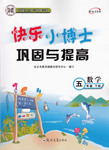题目内容
B
Unless we spend money to spot and prevent asteroids (小行星) now,one might crash into Earth and destroy life as we know it,say some scientists.?
Asteroids are bigger versions of the meteoroids(流星)that race across the night sky. Most orbit the sun far from Earth and don't threaten us. But there are also thousands whose orbits put them on a collision course with Earth.?
Buy $ 50 million worth of new telescopes right now. Then spend $ 10 million a year for the next 25 years to locate most of the space rocks. By the time we spot a fatal one,the scientists say,we'll have a way to change its course.?
Some scientists favor pushing asteroids off course with nuclear weapons. But the cost wouldn't be cheap.?
Is it worth it? Two things experts consider when judging any risk are: 1) How likely the event is; and 2) How bad the consequences if the event occurs. Experts think an asteroid big enough to destroy lots of life might strike Earth once every 500,000 years. Sounds pretty rare-but if one did fall,it would be the end of the world. “If we don't take care of these big asteroids,they'll take care of us,”says one scientist. “It's that simple.”?
The cure,though,might be worse than the disease. Do we really want fleets of nuclear weapons sitting around on Earth? “The world has less to fear from doomsday(毁灭性的) rocks than from a great nuclear fleet set against them,” said a New York Times article.
1. What does the passage say about asteroids and meteoroids?
[ A ]. They are heavenly bodies different in composition.
[ B ].They are heavenly bodies similar in nature.
[ C ].There are more asteroids than meteoroids.
[ D ].Asteroids are more mysterious than meteoroids.
2. We can conclude from the passage that_____ .
[ A ].while pushing asteroids off course nuclear weapons would destroy the world
[ B ].asteroids racing across the night sky are likely to hit Earth in the near future
[ C ].the worry about asteroids can be left to future generations since it is unlikely to happen in our lifetime
[ D ].workable solutions still have to be found to prevent a collision of asteroids with Earth.
3. Which of the following best describes the author's tone in this pass age?
[ A ]. Optimistic. [ B ]. Critical. [ C ]. Objective. [ D ]. Arbitrary.
BDC
解析:
1. 解析:参阅第二段可知流星和小行星都是绕日的星体,故正确答案为[ B ]。
2. 解析:由全文得知小行星毁灭地球的危险存在,用核武器改变其路线的方法不十分可取,所以还有必要找到有效的方法,故答案为[D]。
3. 解析:通读全文,作者的语气是客观的,故正确答案为[C]。

 快乐小博士巩固与提高系列答案
快乐小博士巩固与提高系列答案 D. boards
D. boards